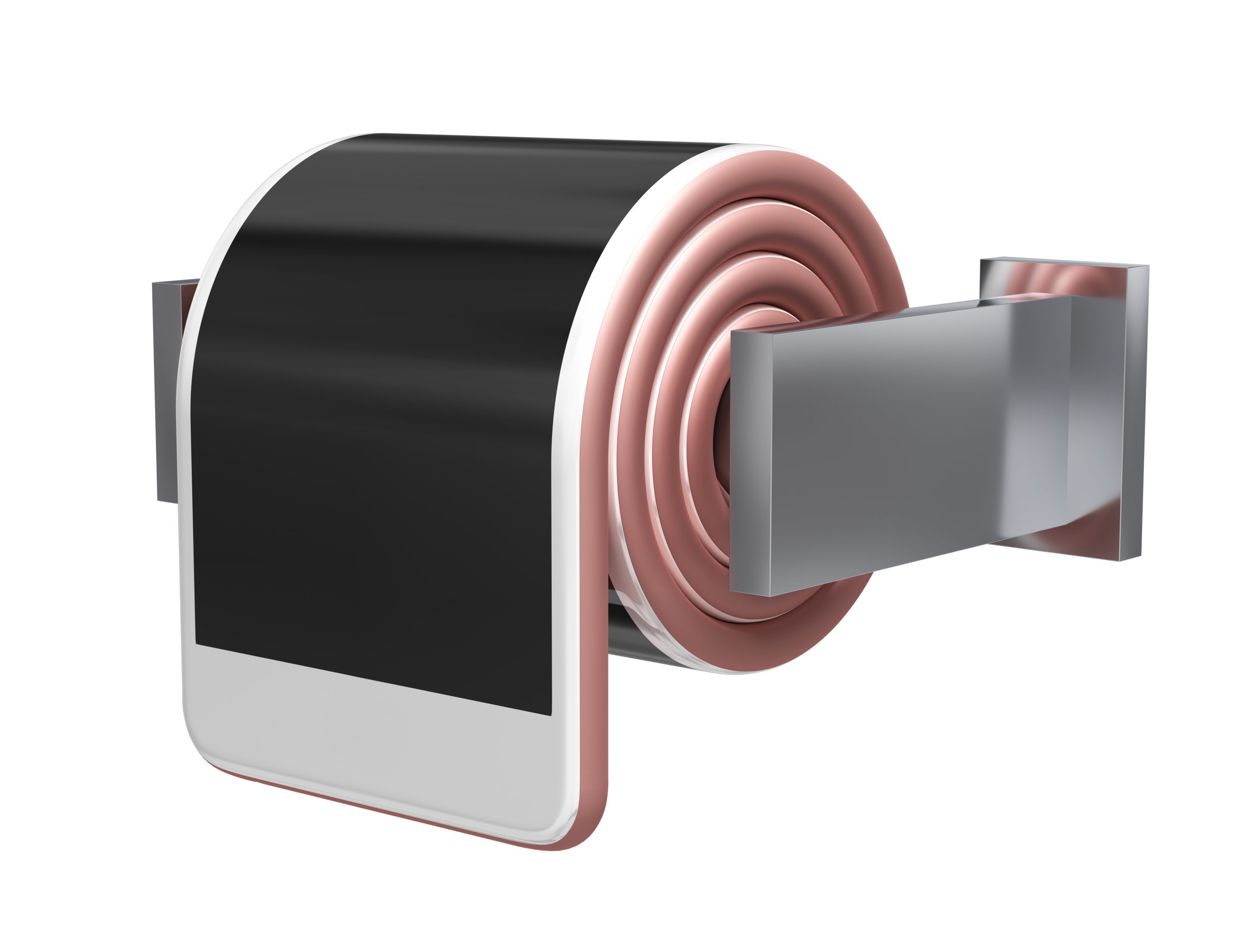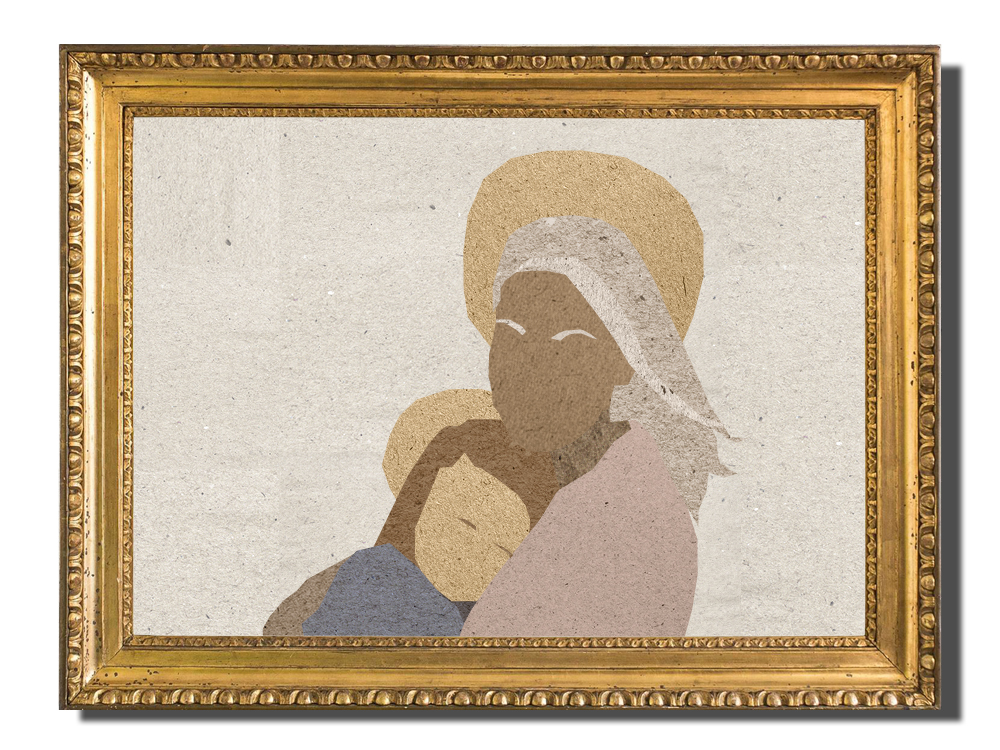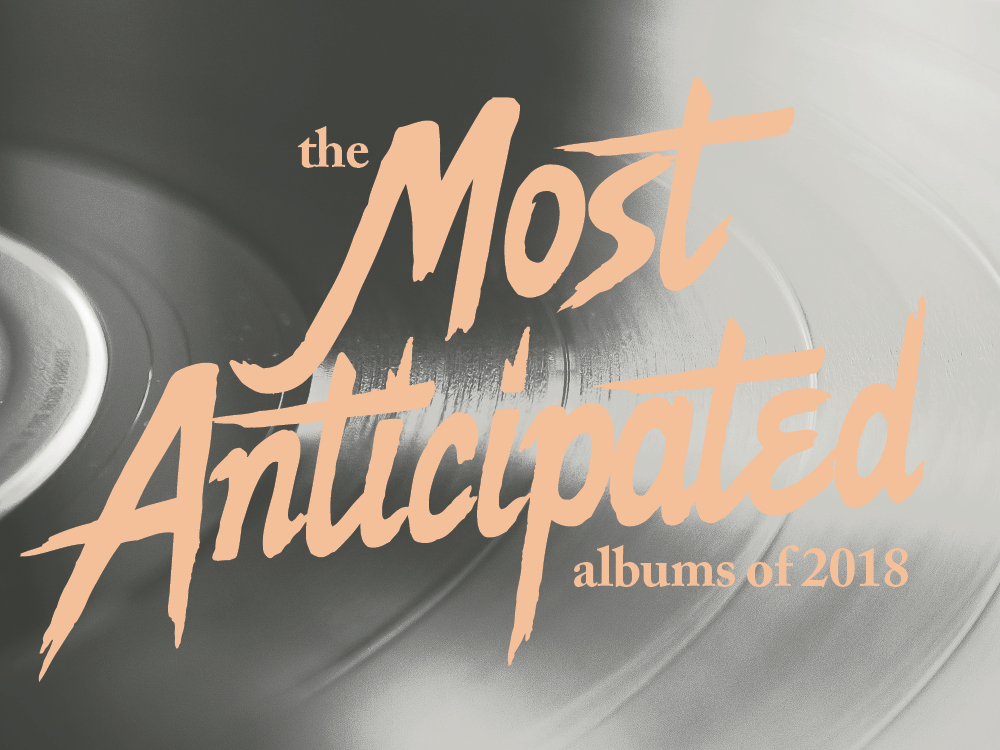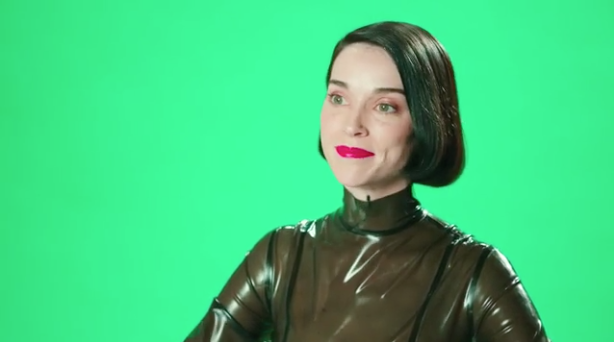By the end of 2016, it was easy to feel overwhelmed by what had occurred in the music world. The major releases had arrived furiously, often with little or no warning, dropping out of the sky and immediately redirecting our attention from whichever other acclaimed album had just come out a week or two beforehand. It was dizzying. Visionary artists in rap and pop released stunning statements that pushed the culture forward, with Kanye and Solange and Rihanna and Frank and Chance and Beyoncé all giving us some of the most definitive work of their careers. Then there was another strain of major releases, mid- or late-career masterpieces from elder statesmen including Bowie and Radiohead and Nick Cave and Leonard Cohen and A Tribe Called Quest -- albums that all happened to grapple with or represent mortality in some form or another, not only injecting further gravity into a heavy year but ensuring that, like those genre-exploding works by younger artists, they would stick with us for some time.
After a year like that, whatever came next was bound to feel a little quieter, a little less frenzied. After a year full of sudden and striking releases by some of our most iconic names, it was easy to look ahead to 2017 and wonder, well, what is even left?
That is, of course, not inherently a value judgment on 2017 musically; there were plenty of albums to love this year, and several albums from similarly high-profile artists as 2016's titanic lineup. Kendrick Lamar returned with the throne-securing DAMN. Lorde appeared with her long-awaited sophomore outing Melodrama. Those two records often felt as if they defined the year and vied for dominance over the cultural landscape, and after that there were still releases from Jay-Z and Taylor Swift and SZA and Björk to dig into as well.
Amidst it all, there was a lower-key but substantial trend that shaped part of the year: the return of many of our most beloved contemporary rock artists. Father John Misty provided a humanist state-of-the-world epic that acted as both catharsis and salve during the early months of Trump’s presidency. The War On Drugs followed their 2014 breakthrough Lost In The Dream with the dense, ambitious A Deeper Understanding. But despite the prominence of those two names, as figures who largely secured that prominence in this decade, they’re also ancillary to the overarching direction of rock in 2017: Over the course of the year, most of the key, active figures remaining from the '00s indie scene released new albums.
In the wake of a transformative 2016, 2017 often felt like an echo of 2007 -- when it came to indie rock, at least. TV On The Radio and Vampire Weekend sat this round out, but otherwise almost all of their notable peers were on the scene. Ten years on from their apocalyptic Bush-era sophomore album Neon Bible, Arcade Fire delivered the cartoonishly-apocalyptic digital-era disco of Everything Now. Ten years on from her debut Marry Me, St. Vincent released MASSEDUCTION, a neon-drenched document of self-destruction and love and resolve that also marked the completion of a transformation arc that occurred across the three records in between. Ten years on from Ga Ga Ga Ga Ga, one of the signature releases of the late-‘00s indie era, Spoon explored a pseudo-left-turn on Hot Thoughts. Ten years on from Boxer, a tense album that captured the despondency and banality of quotidian city life in the waning days of Bush’s presidency, the National crafted Sleep Well Beast, a hazy and simmering album that captures the paralyzed fury and personal stakes of life in the first days of Trump’s presidency.
Some of their peers came back after long absences, hiatuses, or breakups. The biggest, most notable one would be LCD Soundsystem finally delivering the wizened American Dream after reversing their premature retirement; it's the first new LCD album in seven years and landed a few months after the tenth anniversary of their masterpiece Sound Of Silver. Broken Social Scene returned from a similarly timed exodus by following 2010's Forgiveness Rock Record with their new one Hug Of Thunder; same goes for Wolf Parade, following 2010's Expo 86 with Cry Cry Cry this past autumn. Grizzly Bear and Dirty Projectors also returned, each with their first new album after taking a breath for five years. Then there was also Fleet Foxes' meditative comeback Crack-Up, an album whose existence was almost as implausible as American Dream's considering that Robin Pecknold could've walked away from music forever at any point in the six years since Helplessness Blues.
The music landscape is a lot different than when all these bands were starting out or releasing their classic albums 10 or 15 years ago. It's also a lot different than when some of these bands released their last album. The circumstances of all this -- whether the functional aspects of how we consume music or the more abstract concerns of where these artists fit into everything -- change quickly these days. A five- or six-year gap could mean they are wading back into a music world that might feel completely foreign since their last time around.
That goes not just for big-picture industry shifts, but for their contemporaries as well. In the same span of time in which Wolf Parade and Fleet Foxes and Grizzly Bear were dormant, some of these other bands kept plugging along, releasing albums (somewhat) more frequently and never straying too far from the festival circuit. In the last five or seven years, we've watched Arcade Fire and the National and St. Vincent become incrementally bigger: the arena-indie powers that headline festivals, that stand atop the scene as the faces representing it to the mainstream. LCD are an exception in the middle, the group that took many years off but are now bigger than before, perhaps thanks to the perceived finality of their breakup vs. a long, listless wait for a new album.
One strain of 2017's late-'00s indie resurgence that's noticeable is that some of these now-bigger-name artists found themselves pushing forward, forging sounds and directions that were new within their personal context. The National incorporated glitchy, chilly electronic textures and rhythms to help Sleep Well Beast get its uneasy and claustrophobic atmosphere, that feeling like your brain is seasick. Spoon took the more glistening surfaces of 2014's They Want My Soul and corroded them into the sleazy robo-funk of Hot Thoughts. Arcade Fire dove further into dance rhythms than on 2013's Reflektor, doubling-down on glossy disco as a mechanism for their attempt at illustrating 21st century over-saturation and plasticity. For St. Vincent's MASSEDUCTION, Annie Clark both extended and departed from the increasingly synthetic nature of her preceding two albums, carving out her own interpretation of pop through a mixture of lustful and grieving synth-pop and fragile ballads.
In comparison, many of the bands making their long-awaited comeback in 2017 tread a different path. Some were comfort food for an aging indie-rock fan, like how Cry Cry Cry bottled up various approaches from Wolf Parade's first three albums into a collection that's wiry but reliably punchy. Similarly, Hug Of Thunder had all the true-to-form Broken Social Scene sunrise bombast, with a little more grooviness at times.
Several of the albums felt akin to how The Force Awakens functioned as a reboot of the Star Wars franchise: They seek to remind you of what you originally loved about these artists in years past, while lightly expanding the framework and suggesting what sort of newness could potentially come next. That was the case for Grizzly Bear's Painted Ruins, a tangled and proggy outgrowth of their intricate folk-indie roots. It was also the case for Crack-Up, where Pecknold took Fleet Foxes into more adventurous and introspective territory, a darker album that reconfigured what this band could be about. On one hand, American Dream felt like LCD Soundsystem picking up where they left off, but thanks to a stormier mood and more weathered philosophies, it's also a work where James Murphy's writing enters a new chapter.
Altogether, it underlines a footnote about the '00s indie moment that's only been exacerbated by time -- applying to the Brooklyn scene that was once home to the National, Vampire Weekend, TVOTR, LCD, St. Vincent, Grizzly Bear, and Dirty Projectors but also beyond. The previous New York rock movement, the early '00s retro-rock resurgence, could be summed up with a whole set of shared cultural touchstones, a common history those artists were primarily tapping into, with similar musical reference points. The next wave, the mid- and late-'00s indie swell symbolized and spearheaded by the Brooklyn scene, was always more diffuse. The primary artists, the ones we remember and we're talking about in 2017, never sounded very similar even when you could find connective tissue. It was a looser assemblage, a sort of transition before we got a few years deeper into the digital era and our old concepts of locality-based scenes and sounds continued to break down and morph.
All these years later, the distance between these artists feels greater sonically, but we may group them together even more tightly, even as entities like Arcade Fire and the National and St. Vincent appear to be reaching an echelon in pop music history beyond that of their peers. Now, they're the survivors in one form or another, the luminaries from not too long ago that nevertheless feel like the older generation, the remnants of one of the last rock moments you could strain and tie a narrative bow around. Today, the fragmented and expansive landscape has room for all these artists to thrive and remain in the fray. It has room for a host of young DIY-driven artists reorienting the gender and race boundaries previously codified in the rock sphere. It has room for seemingly classicist-minded mad-scientists like Tame Impala's Kevin Parker and the War On Drugs' Adam Granduciel and Father John Misty's Josh Tillman -- the latter two of whom may have found their success later but have actually been active since the '00s, and are around the same age as the artists beginning to seem like elder statesmen.
The point is: This is a free-for-all that all these '00s bands have reentered however many years later. And now, whether because of the time elapsed since their last release or because of the perennial discussion of rock's recurring death, all of these aforementioned 2017 releases might find themselves running up against a pesky, recurring concept: relevance.
It's an inherently murky issue when it comes to these bands. None of the late-'00s indie bands were hitmakers in their early days; they were not "relevant" in the mold of mainstream pop success the way in which the acts that defined past, more monolithic rock moments were. They came out of a different tradition to begin with, and their ascensions were driven by the fact that the online underground appeared to be where the most exciting developments were occurring in rock music at the time, and the fact that the internet era altered the guidelines by which we previously measured "success" and "relevance." When it comes to quantifiable success, some of these artists are bigger than ever. People still buy their records. People sing along to their songs on festival fields, the same songs that might appear in a movie or prestige TV show or commercial. They do have reach.
Much thornier and more difficult to measure is relevance -- a consideration of what music is harnessing, reacting to, or clarifying the world around us right now. In that context, the perception of these late '00s bands having been more relevant 10 years ago is something that still necessitates an asterisk: This might've been the core of the rock world, but rock had already lost its mainstream dominance. These were bands that did occasionally draw on classic rock greats, but also drew upon '80s and '90s alternative references that were never "relevant" in the way of defining and driving a major cultural moment. It was artier from the beginning, and the 21st century experiences they summed up were specific slices of 21st century experience.
As we near the end of another decade, those questions are heavier. While our perception of relevance can be messy -- after all, the idea that these bands captured specific experiences in a fragmented culture is partially a response to the concept that older, bigger artists were universal within a monoculture, which itself has some intrinsic myths to it -- there's no question that some of these '00s indie bands now feel of the past. Like they don't belong to this moment. In an era where it's more important than ever to heed a multiplicity of voices, and in an era where some of the more forward-thinking musical leaps are being made in other genres, what's the place of the aging indie-rock band, still there carrying the torch for something that does tie back to the old world? How could they avoid, to quote the Father John Misty song "Leaving LA," acting as "Another white guy in 2017/ Who takes himself so goddamn seriously," a guitar-slinger nearing or situated in middle-age?
This is not an issue that's lost on these artists, especially the ones who spent some time away. Back in February, Pecknold and Dirty Projectors' Dave Longstreth engaged in an Instagram conversation spurred by the latter musing about the "both bad and boujee" state of indie in 2017. The conversation unspooled further from there, with moments where they asserted that the last time indie was truly musically progressive was in the late '00s, along with acknowledgments that there are different purposes for different kinds of music and that progressive musical decisions were indeed being made elsewhere. Nevertheless, there were some who perceived the whole thing as a bit "get off my lawn." Pecknold revisited some of these concerns with Grizzly Bear's Ed Droste in a conversation for Interview later in the year, and Droste in turn spent a few interviews during the Painted Ruins rollout airing anxieties about where his band's place was in all of this, at this juncture.
Those are pretty reasonable anxieties to have. In a narrative-driven era of pop music, it's hard to say where any of these artists live, where they belong and what their role is. It was always a loose collective lumped in together, and now it's as if they remain, distantly related but on separate wavelengths in a changed world. If you were a member in some of these groups, I'm sure it would be easy to wonder who, if anyone, needs you in 2017. Today, many of them sound out of place and time.
But, in some ways, isn't that how it always is? The bands that wind up defining an era, that really rise up as the primary names that we use as shorthand in the decades since, are often artists that bore some qualities or characteristics of their time but also sounded singular within it. Did Fleet Foxes and the National really sound like 2007 any more than they do 2017? Some of these artists were always on their own wavelength; back then, they could be grouped together into something that was happening. Now, they are artists that simply exist, continuing to hone their craft and release new music their fans can appreciate.
On some fundamental level, that's all that really matters. Not all artists are equipped to make great State Of The World records; not all of these artists have the voices we need to hear from on the level of, say, Kendrick's in 2017. That's OK. That's something a lot of these artists know, too. I think back to something Pecknold has said a few times this year: He's cognizant that Fleet Foxes might not make much sense in 2017, but he wanted to make music that could be useful to someone. Music that was impactful and beautiful and could help someone's life in some way. Most of the 2017 albums mentioned here were very good. Some were great. A few were brilliant. A smaller number still felt as if they truly had something to contribute to the conversation of this year, or that they were pushing forward in a significant, cultural way. That is also OK. These are albums made by artists that, subconsciously at least, may well be aware that their place isn't at the forefront of culture right this second, at this point in their careers, as the next generation rises up. But they know they have something to communicate, and they, more often than not, still know how to do that in ways that leave a mark on the listeners who want it. At some point, that's all that's relevant.






